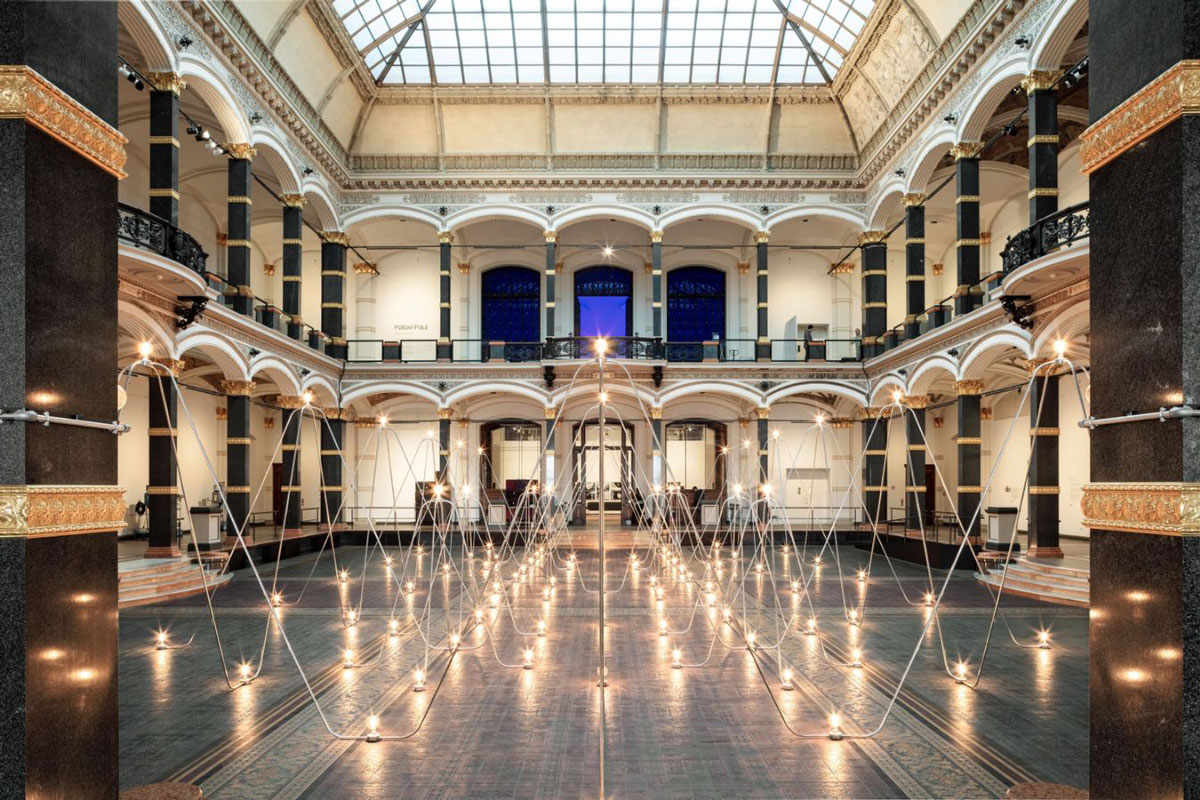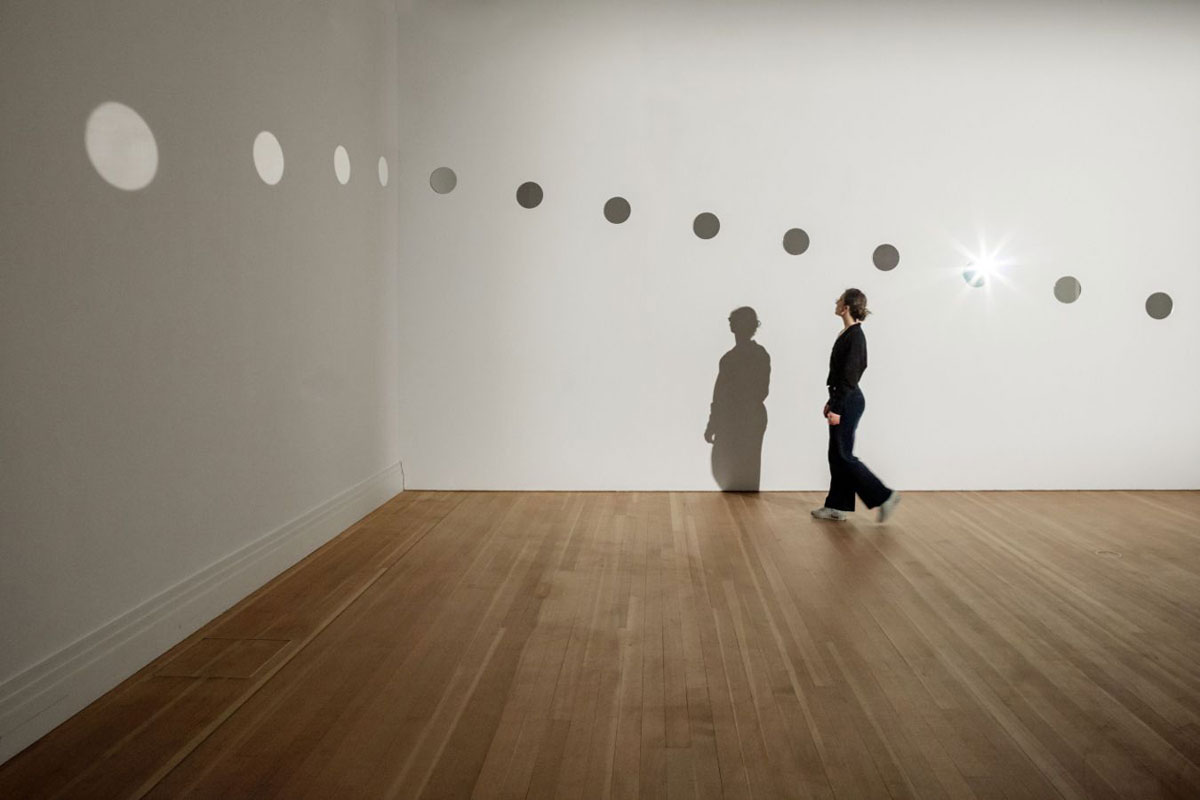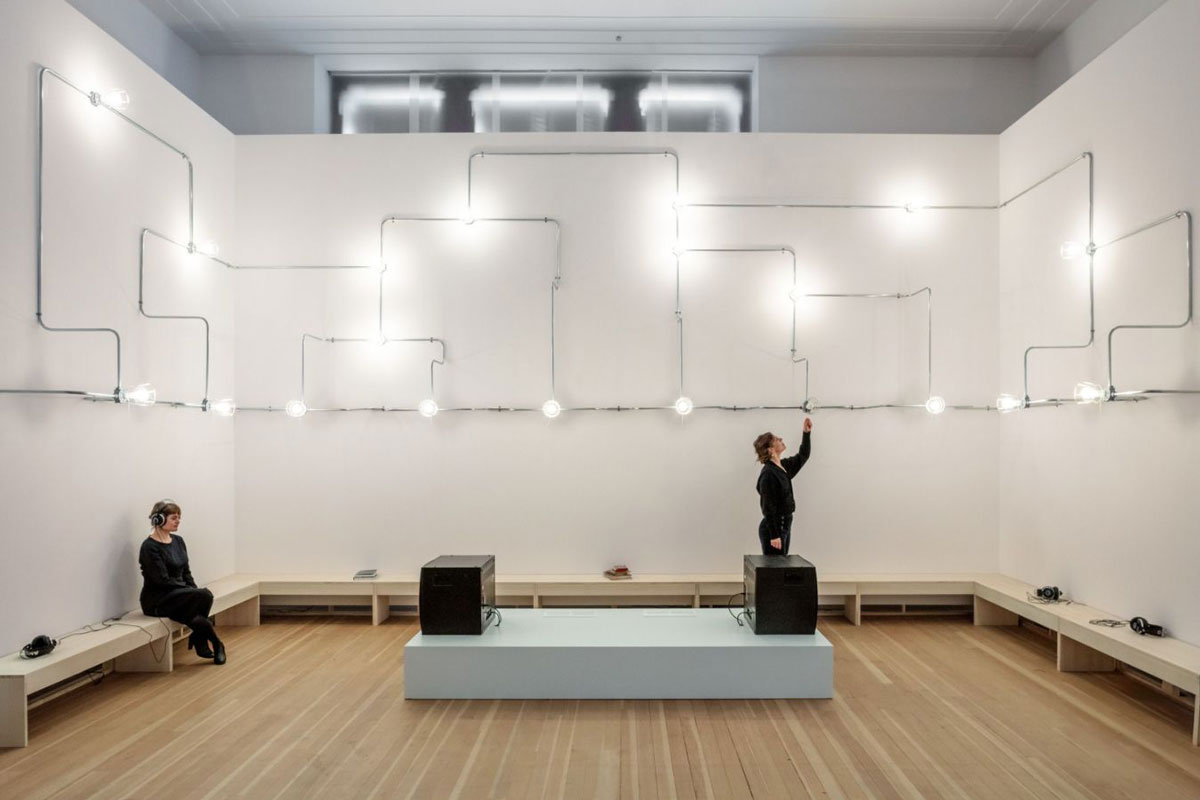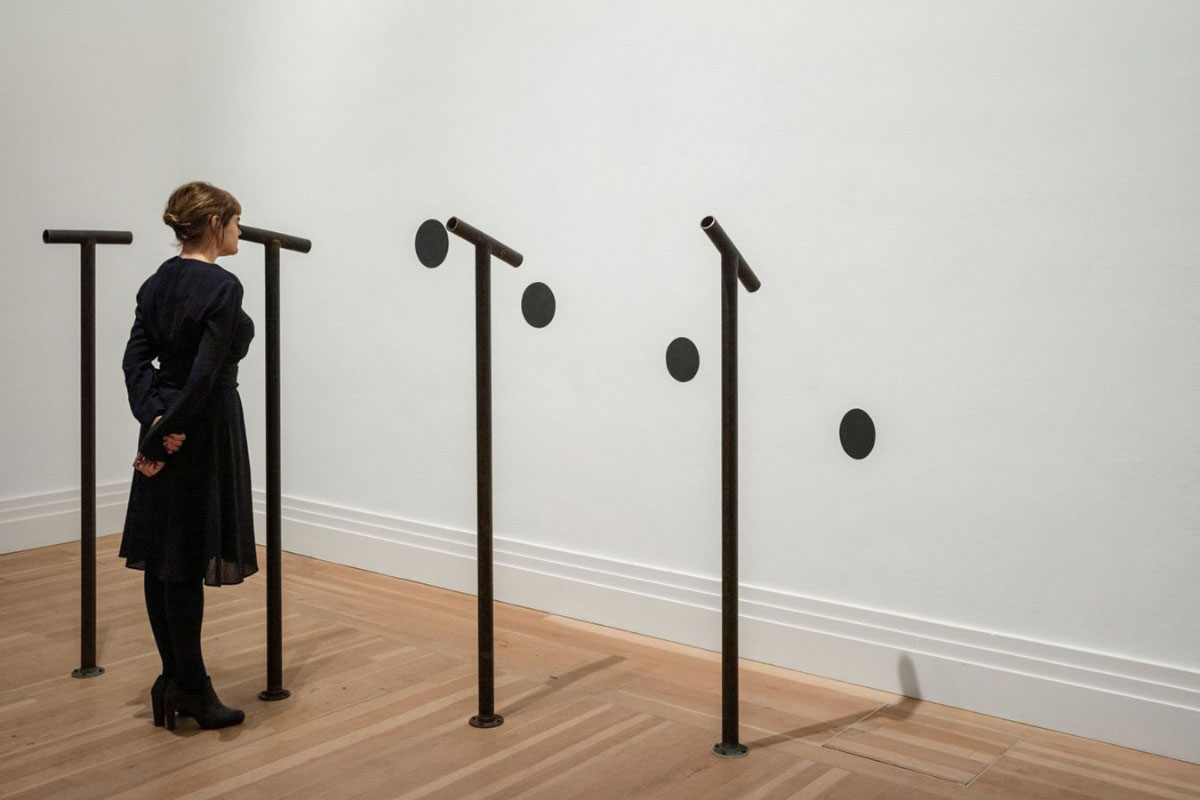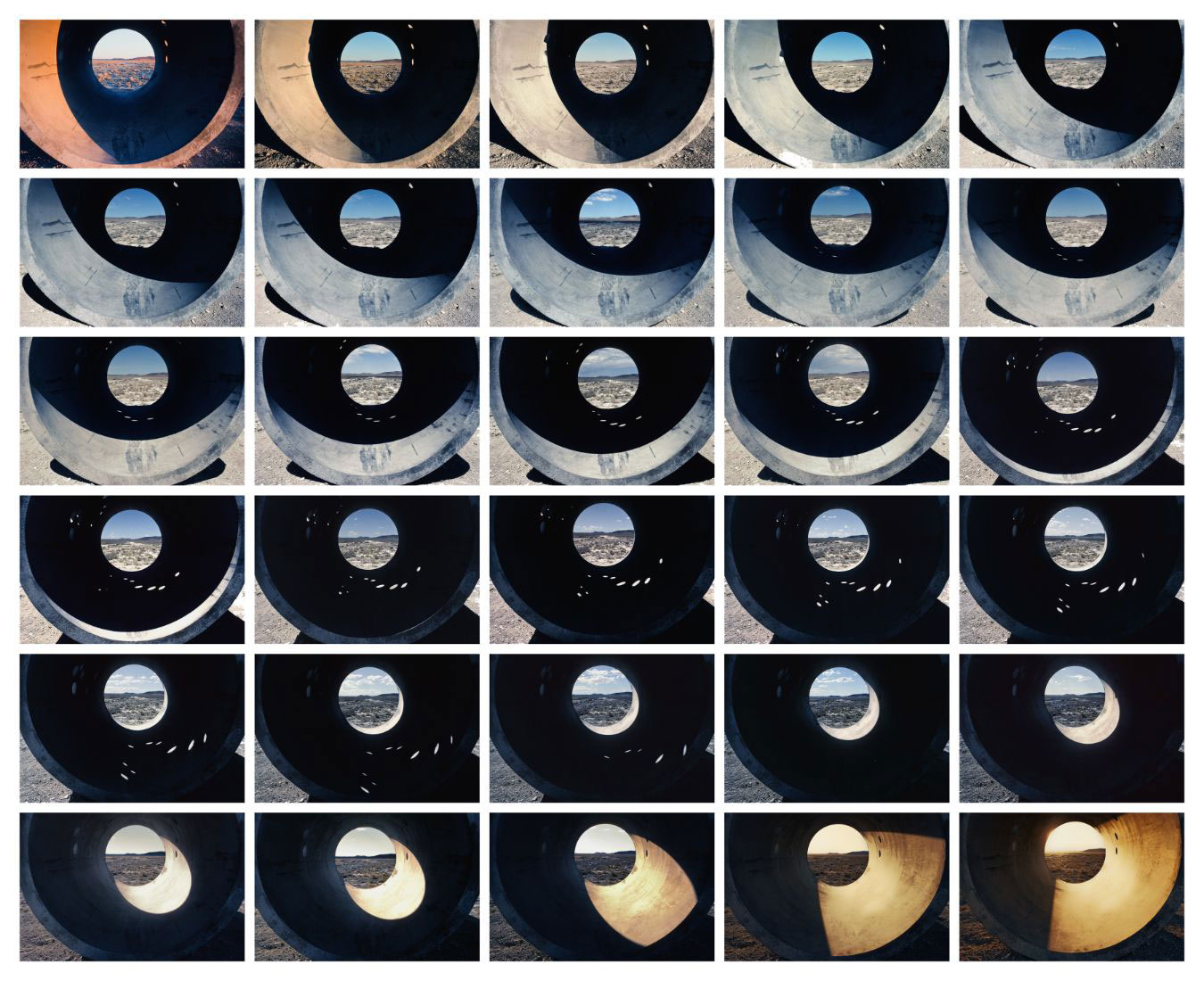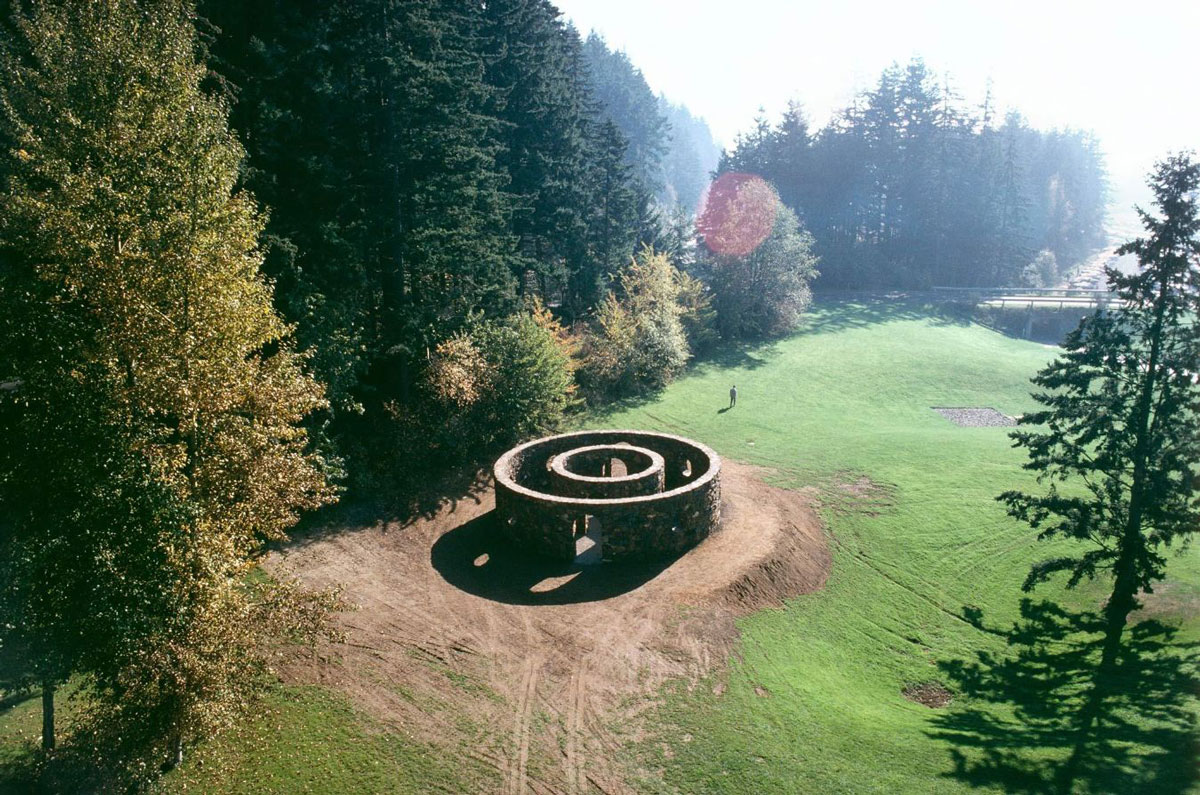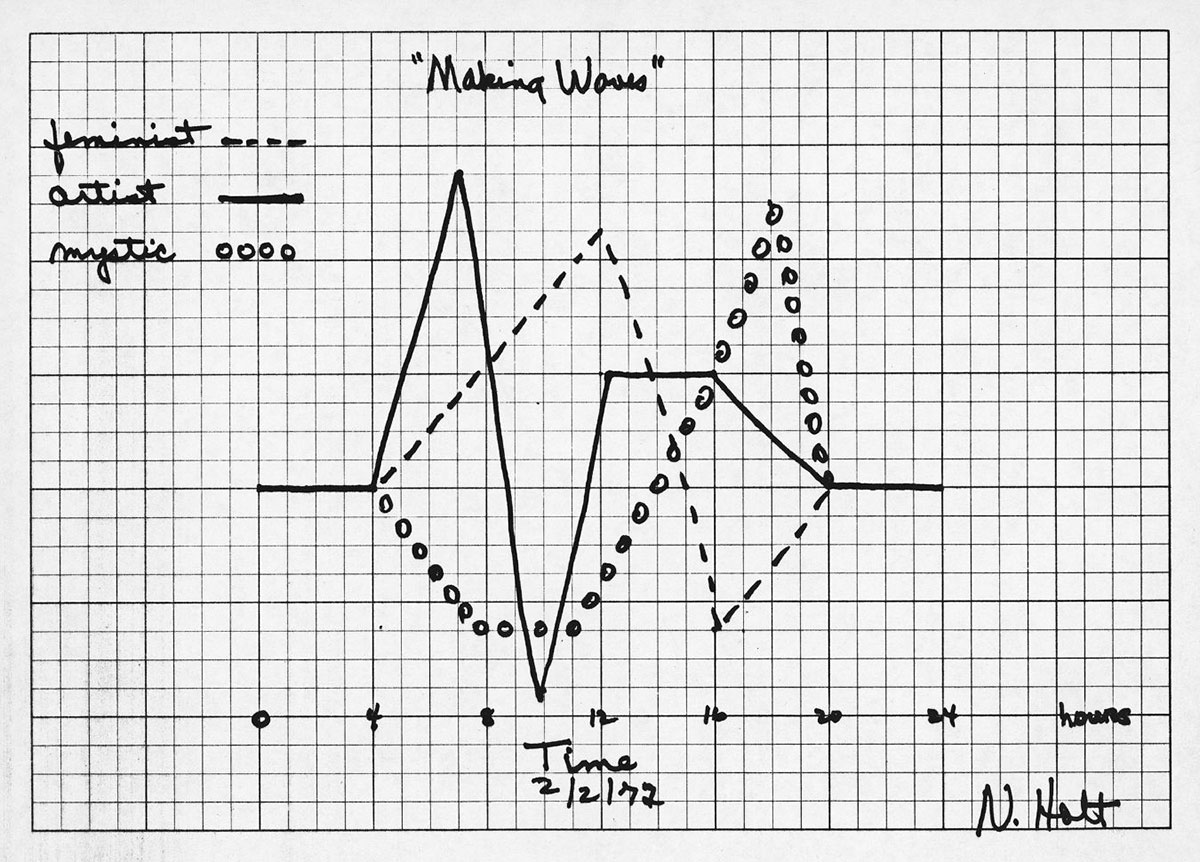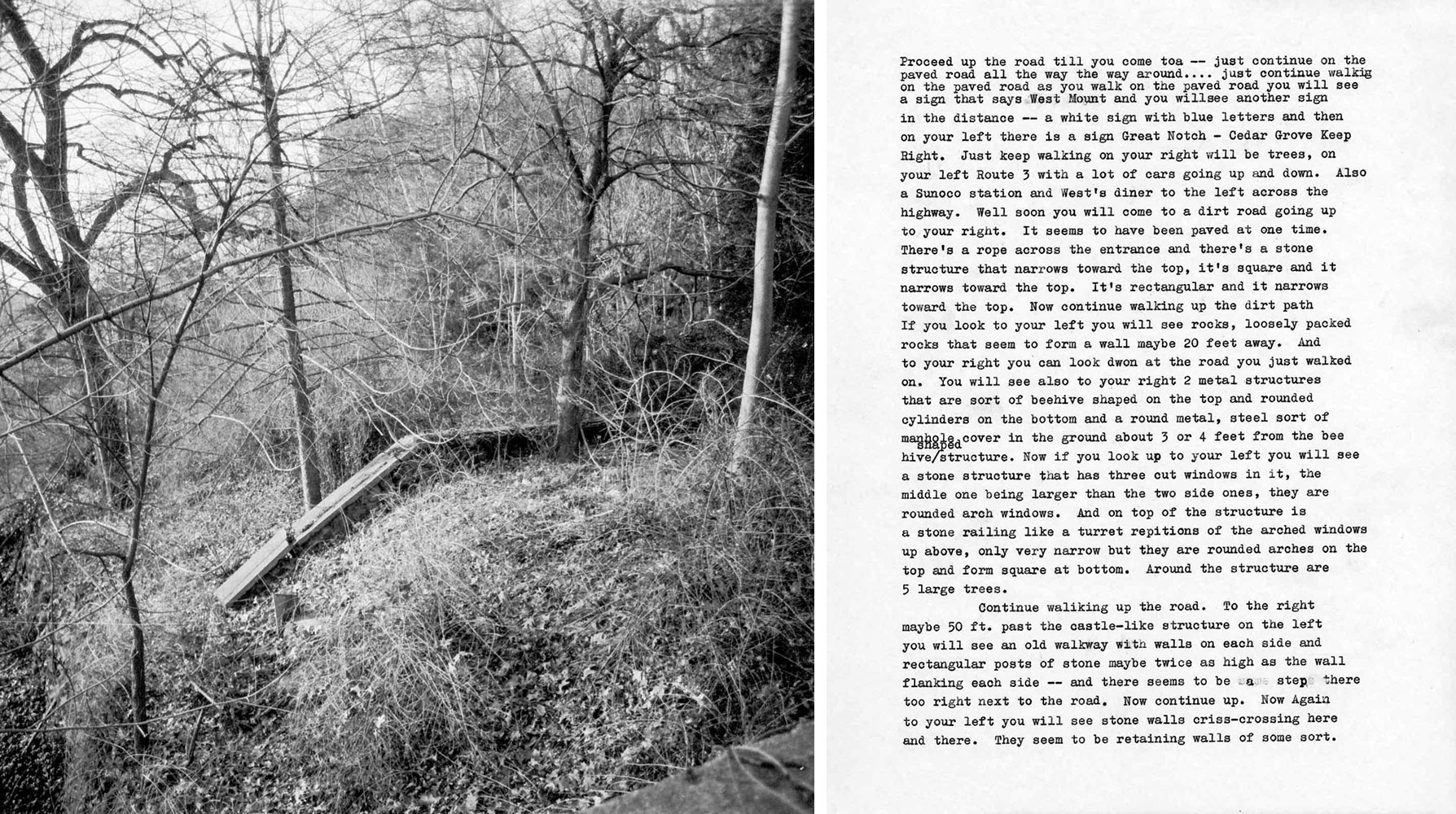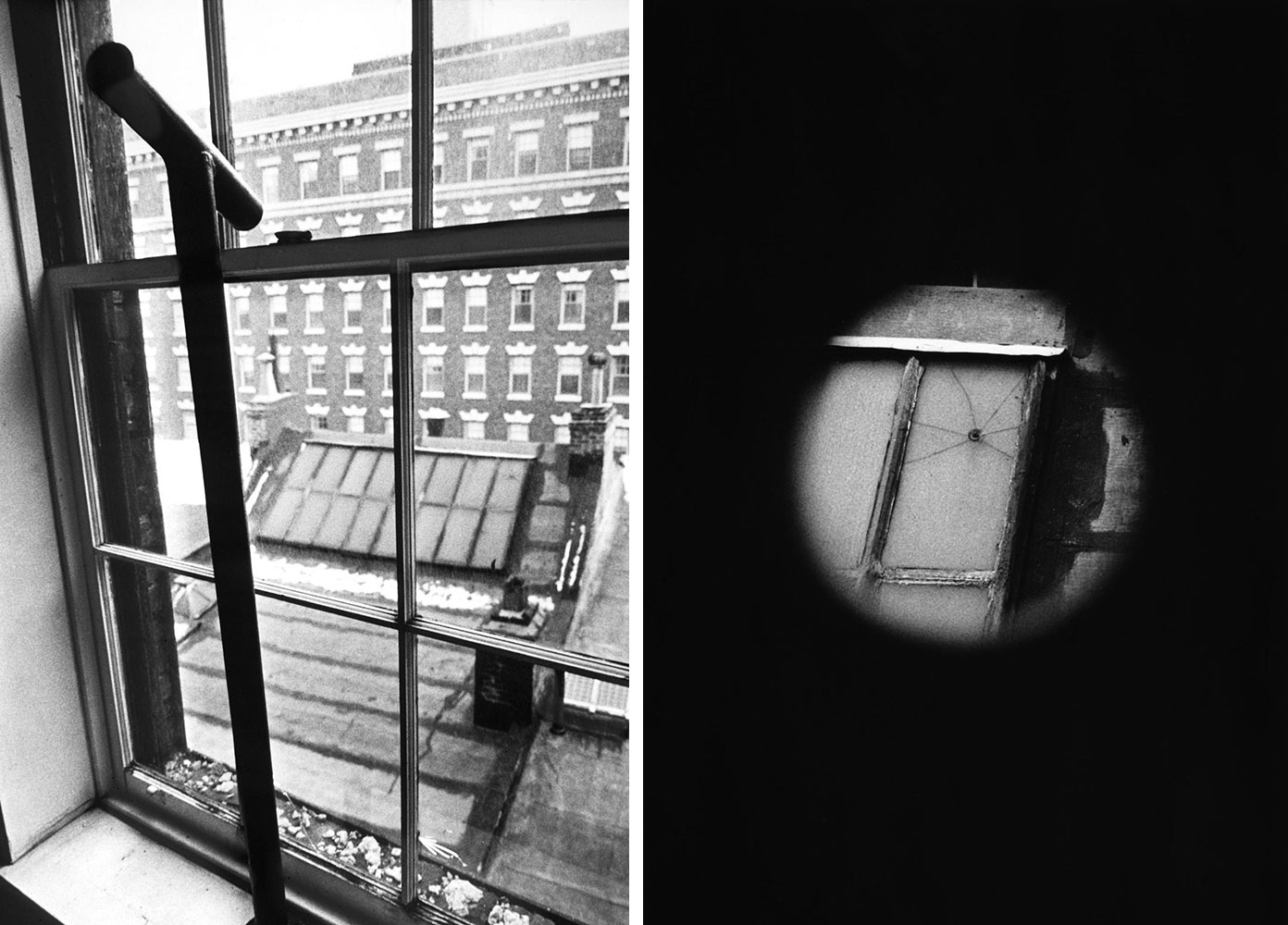TRIBUTE: Nancy Holt-Circles of Light
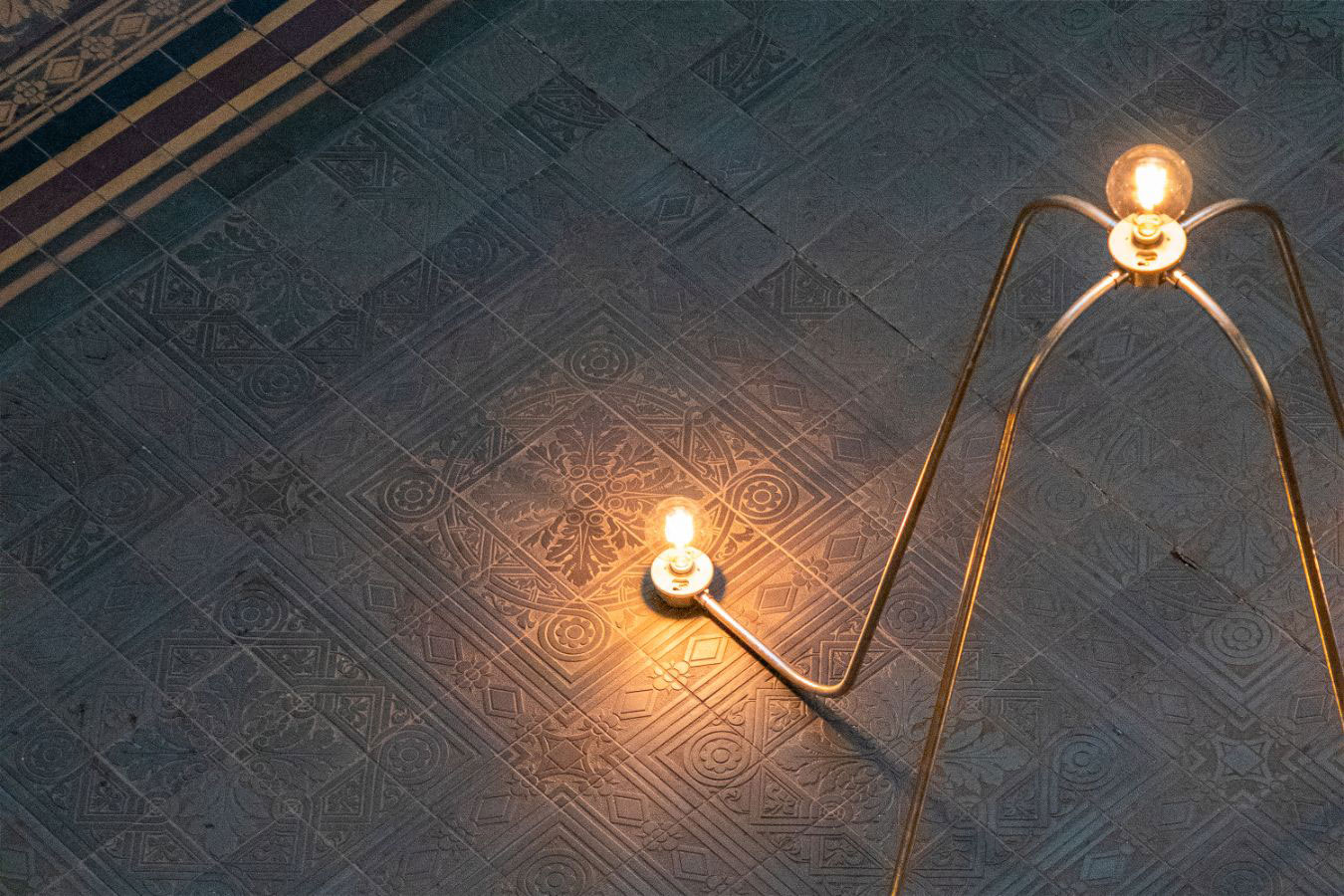 In her artistic practice, Nancy Holt reimagined site-specific installations and ways of working with natural and artificial light. She began focusing on ecological aspects at an early stage and incorporated the earth’s rotation, astronomy, time and space into her sculptures, constantly challenging us to look beyond what we think we know. Holt’s working process has a particularly tangible presence in the exhibition at the Gropius Bau through texts and recordings by the artist.
In her artistic practice, Nancy Holt reimagined site-specific installations and ways of working with natural and artificial light. She began focusing on ecological aspects at an early stage and incorporated the earth’s rotation, astronomy, time and space into her sculptures, constantly challenging us to look beyond what we think we know. Holt’s working process has a particularly tangible presence in the exhibition at the Gropius Bau through texts and recordings by the artist.
By Dimiris Lempesis
Photo: Gropius Bau Archive
The exhibition “Circles of Light” is the most comprehensive presentation of Nancy Holt in Germany to date. Over five decades, her pivotal work encompassed text, poetry, audio, photography, film and video and land art. She consistently experimented with sound, image, and the very nature of objects to redraw the boundaries of what art can be and where it can be found. Taking a journey through Holt’s output, starting with her first artwork made in 1966, the exhibition expands over the Gropius Bau’s ground floor and atrium. Paying attention to Holt’s experimental approach to the interplay between the immaterial and the material, this exhibition underscores the singularity of Holt’s oeuvre. Exploring her use of language and voice, her attention to ecology and resources and her collaborative working methods, “Circles of Light” demonstrates Holt’s anticipation of present-day questions concerning our role within the exploitation of the natural landscape and the questioning of humankind’s place in the environment. Holt’s interest in bridging art with science and material with perception unfolded into a unique practice, exploring the poetics of space, the built and natural landscape, and our role within the cosmos. Born in Massachusetts in 1938, Holt grew up in New Jersey, returning to her home state in the mid-1950s to train as a biologist before moving to New York to establish her life as an artist. 1966 was the year she made her first artworks, while working as an assistant literary editor at Harper’s Bazaar. These concrete poems treat language as a material. She soon brought her experiments with language from the page to the landscape, deploying the voice and the medium of photography. For the key multimedia work “Stone Ruin Tour” (1967), Holt dictated a tour into a tape-recorder as she walked through an abandoned building in Cedar Grove, New Jersey. This early example of Land Art takes the form of Holt’s voice, a slideshow, photographs, and a score charting a way through, what she described, as a “decaying, labyrinthine garden of stone walls, overlooks and disappearing stairways in the woods of northern New Jersey.” Holt was interested in the ways humans use language to explain naturally occurring systems as much as she was in the systems humans invent to control nature. “Stone Ruin Tour” marked her use of the voice and photography, which soon after led her to work with film and video, and she would make important contributions to the history of experimental film and video. The exhibition presents an extensive selection of these moving image works, including several short films from the early 1970s that have never been previously exhibited, as well as Holt’s photographic series that operate as visual poems. Holt came to explore the many elemental and technological systems, both natural and human-made, that govern our experience of the world. Whether emitting from the skies above or the electricity grid, Holt persistently returned to light as a medium to explore perception. The form of the circle and the material of light are consistent elements in Holt’s nearly fifty years of artmaking and are present in her earliest works. The groundwork for these experiments arose in the 1970s, first in her language works and then in her room-sized installations. “Mirrors of Light I” (1974), for example, employs immaterial elements such as light, time and reflection for their sculptural qualities. The Gropius Bau’s historic atrium is illuminated by “Electrical System: (1982), a work never shown before at this scale. This immersive installation was the first of her System Works that explore infrastructures of power, manifesting Holt’s interest in revealing the internal ‘organs’ of everyday technological structures. Electrical System is composed of illuminated light bulbs and arching conduits that create a fountain of light viewers are invited to move through. “Electrical Lighting for Reading Room” (1985) inside the exhibition rooms is a functional artwork, showing the power of light and providing illumination for three moving image portraits. In her writing on this work, Holt reached back to the Greek root techne and its original meaning, “art”. Following her interest in photographic techniques of observation, Holt’s pivotal “Locator” sculptures, begun in 1971, represented a turning point. Made of welded, industrial piping, intended to be looked through with one eye, like a viewfinder, these “seeing devices” drew attention to the subjectivity of human observation within the natural and built environment. The “Locators: are sculptures to look with, rather than at. The first Locators looked from Holt’s studio in New York out through the windows to the surrounding cityscape, directed on casual details such as a cracked window or an exhaust pipe. Experimenting with the nature of vision Holt focused other “Locators” on what she called “loci,” ellipses that resolve into perfect circles only when viewed through the Locator. In 1972 “Missoula Ranch Locators: Vision Encompassed” took the Locators into the rural landscape, and a year later she began her work on her landmark “Sun Tunnels” (1973–76) where, as Holt describes, “The work becomes a human focal point, and in that respect, it brings the vast landscape back to human proportion. “Sun Tunnels” is perhaps Holt’s best-known work, and it is a cornerstone of the environmental and Land Art movements. In the Great Basin Desert, Utah four giant concrete pipes are arranged on the flat desert terrain in an ‘X’ shape, pierced with holes mirroring four constellations that bring the stars down to earth. The outcome of a multi-year collaboration with a team including (amongst others) engineers, surveyors, construction workers, builders and astronomers, “Sun Tunnels” sketches a correspondence between the sun, the transit of the stars, the sense of time and the interplay of light and space. A precise selection of Holt’s drawings, photographs, calculations and a film on show at the Gropius Bau call attention to Holt’s interest in the act of looking itself. Continued through the ongoing research and initiatives of the Holt/Smithson Foundation (willed into being by Holt in 2014), Holt’s boundary-bridging art continues to spur new insights in re-assessing our place in the world and the cosmos.
Photo: Nancy Holt, Electrical System, 1982, installation view (detail), Gropius Bau, 2024 © Holt/Smithson Foundation, VG Bild-Kunst, Bonn 2024, courtesy: Sprüth Magers, photo: Luis Kürschner
Info: Curators: Clara Meister and Lisa Le Feuvre, Gropius Bau, Niederkirchnerstraße 7, Berlin, Germany, Duration: 22/3-21/7/2024, , Days & Hours: Mon & Wed-Fri 11:00-19:00, Sat-Sun 10;00-19:00, www.berlinerfestspiele.de/

